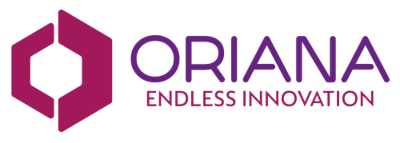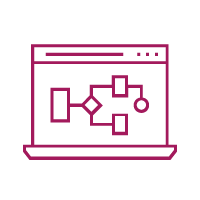Tomorrow is the new today
The world is getting smarter, at least when it comes to connectivity and technology. Gartner’s Top 10 Strategic Technology Trends for 2020 predicts that AI use will continue to grow, with AI becoming, “…a foundational catalyst for advanced process automation and human augmentation and engagement. Physical environments including factories, offices, and cities will become ‘smart spaces’ within which people will interact through multiple touchpoints and sensory channels for an increasingly ambient experience.”
The Internet of Things is (almost) in reach, but how prepared are organizations for the massive upswing in data usage this will bring, coupled with and enabled by the widespread adoption of 5G? Multi-experience platforms with immersive and conversational capabilities are happening now, and their uptake will grow rapidly.
Change? – Thanks but no thanks!
Perhaps you think, ‘Not in my organization…’ But don’t bet on it. Anywhere that AI can be used, it most likely will be used. However conventional a business may appear to be, let’s say insurance or banking, there will be end-users who demand a seamless experience. On-boarding of customers is a typical example of this. As consumers, when we decide to go with a new bank we want swift attention and as little tedious form-filling as possible. We know who we are, and we expect the bank to get to know us as fast as possible. This means a system that answers our call and then leads us through a process which – utilizing AI – can now take as little as one hour for a ‘non-complex customer’, compared to a previous time of about five days.
For example, the Danish Saxo investment bank has dramatically reduced onboarding times, while increasing new customer sign-ups from an average of 1,500 a month, to a record high of 18,000 in April 2019. ‘Challenger banks’ such as B52 Holding AG aim to use AI to reduce customer on-boarding to as little as five minutes, using a combination of facial recognition techniques and document scanning from a customer’s phone.
IoT magic… vs process
So while we are all intrigued by the advent of driverless cars, smart cities, and being able to remotely check how much orange juice is in the fridge, there are many more seemingly mundane functions where AI is happening right here, right now. The Gartner Report of Trends for 2020 predicts that, “by 2022, at least 40% of new application development projects will have artificial intelligence co-developers on the team.”
This is all very well, but the basis of most company’s core systems is Business Process Management, not built to deal with the high speeds and flexibility now required. In fact, the clue is in the word process: BPM suites of software are designed to do repetitive, workflow-oriented tasks. Yes, companies want efficiency and agility, but just as they’re getting it, there’s this new kid on the block, AI, adding whole new layers of possibilities because now we have to factor in intelligence.
“With intelligence built-in, organizations can continuously improve on success over time using the analytics that only digital processes provide.” In other words, we are now moving from BPMS to iBPMS – Intelligent Business Process Management Suites which provide the flexibility for change. This is a change that can be easily enabled by workflows designed and enacted using low-code solutions, by the actual users of a system – Citizen Developers.
So with low-code platforms such as Oriana’s, we have the means to easily sculpt Business Processes to the exact needs of an organization. Couple this with the rapid uptake of Robotic Process Automation or RPA, where automation opportunities powered by AI can be identified to free up people, and iBMPS becomes a reality. For example, Oriana is now partnering with RPA leader UIPath to provide routes to streamline processes and improve efficiencies. Oriana also works well with Microsoft’s Azure Cognitive Services and can therefore leverage the AI capabilities of Azure.
One of the significant features of this streamlining is that it can all be done ‘on top’ of existing Enterprise Resource Planning (ERP) systems, without disrupting any existing processes. So a company can be brought into the contemporary world of intelligence and agility with ease, and cost-effectively. Returning to that Gartner Technology Trends Report, here’s one of the conclusions: “The exploitation of AI will be a major battleground for technology providers through 2022. Using AI for well-scoped and targeted purposes delivers more flexible, insightful and increasingly autonomous systems.”
So even if you’re not in the business of autonomous vehicles, iBPMS is available now to bring a wealth of features to your organization, which means you really should be focusing on it now, because tomorrow is the new today.



